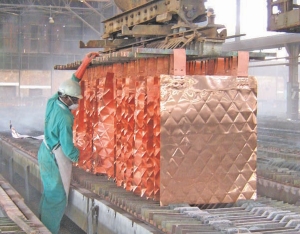Nearly five billion people will live in cities by 2030 compared with 3.4 billion today and the high urbanization rate over the next 20 years will drive demand for copper and coal, Standard Chartered Bank notes in a research report.
About halfway through the world’s first modern super-cycle (1890-1913), copper traded at US$9,790 per tonne in 2010 prices, the report states. Today — eight years into the world’s third super-cycle according to the bank — the metal is trading at US$8,850 per tonne.
Copper is a “classic example” of a commodity that reacts strongly to super-cycles given its low inventory and inelastic supply, the British financial services firm states. And after years of underinvestment, copper supply is struggling to keep up with demand.
It points to Chile and China to illustrate its point. According to its figures, Chile is expected to add 56,000 tonnes to its mine supply in 2010, while under “reasonably conservative forecasts,” China will add 830,000 tonnes “to the demand side of the equation.”
The report’s authors note that the global financial crisis has delayed roughly 3.5 million tonnes of new copper supply at the same time that “declining ore grades at major mines, labour disputes and regional and political unrest in a number of countries” have also crimped supply. Moreover, supply growth “is insufficient to dampen copper prices” going forward. Standard Chartered forecasts a “dramatic deficit” in copper by 2013 with prices rising to US$12,000 per tonne in 2014 and over US$15,000 per tonne by 2027.
When it comes to coal, the global financial crisis has delayed roughly 33 million tonnes of supply from new coal mines, Standard Chartered says, which means there would be a global deficit of as much as 30 million tonnes by 2018. This shortage will push up coal prices. While the market will be balanced over the next few years, it will tighten beyond 2015, the bank claims. Coal prices are forecast to move up to US$200 per tonne by 2024 and surpass US$240 per tonne by 2030.
In Asia, where a significant amount of the growth is expected to come from in the current super- cycle, coal makes up 52% of the energy mix. Asia accounts for about 66% of global coal consumption and is “likely to remain reliant on coal for the rest of the current super-cycle,” the report states.


Be the first to comment on "Copper, coal good bets in super-cycle"